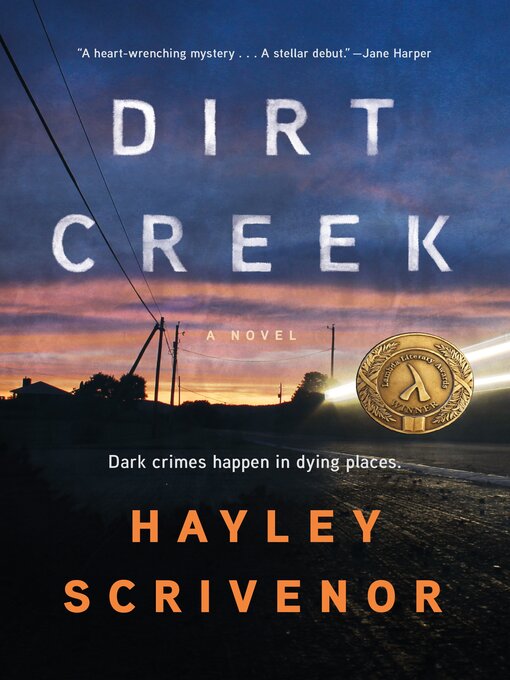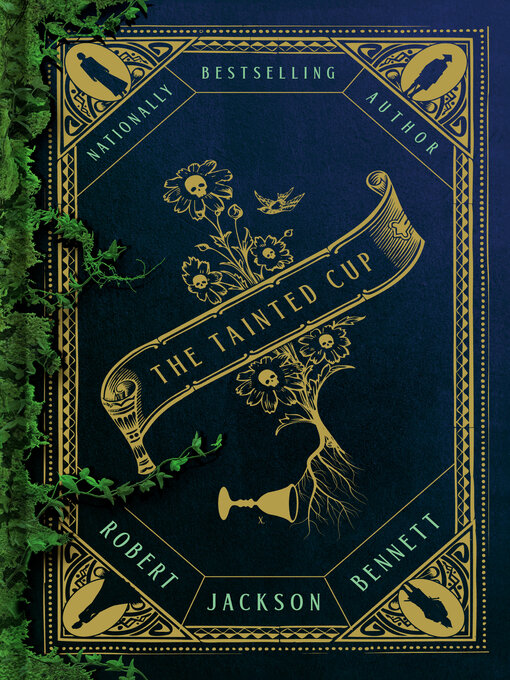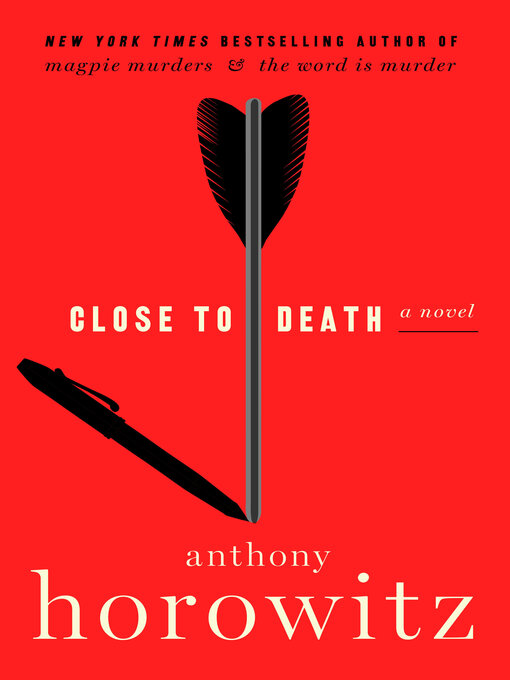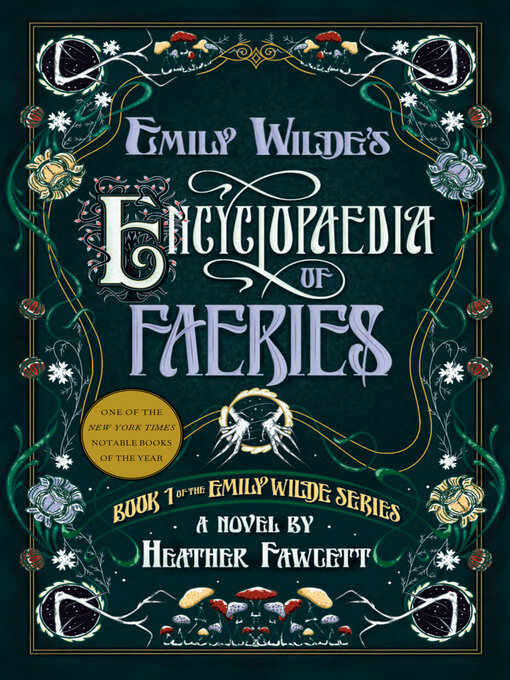Reading Roundup: Women in AutiSTEM
June
This month I read 5 ebooks and 2 physical books from the Toronto Public Library, plus 1 audiobook podcast, totalling to 8 books.
The Southern Book Club's Guide to Slaying Vampires by Grady Hendrix

Synopsis: James Harris is charming and new to Mount Pleasant, South Carolina. He’s here to take care of his aunt, Mrs. Ann Savage. When he meets Patricia Campbell (a long suffering housewife with an absent husband, rebellious children, and a mother-in-law (Ms. Mary) with dementia), she invites him into her home willingly. Big mistake. James Harris may look charming, but strange things are happening all around Mount Pleasant. Children in the local Black neighborhood are going missing, claiming that a strange white man is meeting them in the forest. Ann Savage viciously attacks Patricia and bites off her ear. And a floor of rats invades the Campbell home, swarming Ms. Mary and her caretaker Ms. Greene. But worst of all: Ms. Mary knows James Harris. He used to be a friend of her father’s 60 years ago, when his name was Hoyt Pickens. He bankrupted the family and blamed a local Black man when children went missing. And he hasn’t aged a day since then. Patricia is convinced: James Harris is some kind of creature, and he needs to leave Mount Pleasant. But will she be able to stand up for her children and do the right thing? Will she be able to even convince anyone else (including her husband and her book club) that something is wrong at all? Or will James Harris take everything that matters.
My thoughts: I was expecting this to be a quirky adventure, but this was truly one of the scariest books I’ve ever read. Partially because the vampire attacks (as well as other crazy things) freaked me out. There were rat attacks, spider/centipede/cockroach encounters, and more. But it was mostly scary because this book took place in the 1990s, and rights for women felt more like the 1940s and 50s. Everyone gave up their jobs when they got married. Everyone was a housewife, dedicated to cooking and cleaning and raising the kids, with almost zero support from their husbands. Patricia appeal to her husband and her friends husbands for help multiples times, and they never believed her because they trusted James Harris (a wealthy, charismatic man who invested with them) over their own wives. That was the part that really freaked me out the most, especially because Patricia kept trying and failing. Eventually she and her book club succeeded, but I wasn’t sure that they would.
Rating: 3/5 women who have not read Cry, the Beloved Country, even thought it was assigned for the book club that month
Good Talk: A Memoir in Conversations by Mira Jacob

Synopsis: This is a graphic memoir about growing up as a child of Indian Immigrants in the United States, as well as Mira's experience being Brown in New York in 2001 and 2016. It also covers many conversations that Mira has with her Jewish husband, and uncomfortable questions from their mixed-race son, Z.
My thoughts: This book had a really unusual art style for a graphic novel. It felt very mixed media: there was usually a background photo, and then illustrations of each character speaking and then the speech bubbles on top. Each character only had one illustration of them at each age, and the effect was kind of disconcerting: it felt very static, because the characters poses or facial expressions never changed in reaction to what they were saying or hearing. On the plus side, I did find it much easier to recognize each character (readers will know that's a struggle of mine when reading certain kinds of graphic novels) because they generally looked exactly the same.


In terms of the contents of the book, I was not super impressed, although a large part of that was due to some faulty advertising (I was told that the book was about growing up religious, but the author only very briefly mentioned her family's Christian roots in India, and that her partner was Jewish). Instead (not a bad thing, just different), the book mainly delt with race and racism. I thought it was fine, but the references felt very much like a time capsule in a bad way. Additionally, for a book that claims to be “a memoir in conversations” it could have leaned in to its own theme a bit more. I would have made more distinction between each conversation, or down the exposition in a way that felt more distinct from the conversations themselves.
Rating: 2/5 children that want to be Michael Jackson when they grow up
The Cure for Drowning by Loghan Paylor

Synopsis: After they drowned in the frozen creek and were nursed back to health by their mother’s celtic magic, Kathleen McNair, now known as Kit, was never the same. Kit hated any time that they were forced to look or act feminine, and wanted to be treated just like their brothers Landon and Jep. Rebekah, daughter of a German-Canadian doctor, similarly feels like an outcast. The growing tensions of the 1930s mean that it’s difficult for Rebekah’s father to get a job anywhere except for Kit’s southern Ontario town (too desperate for a doctor to be able to turn down anyone). Rebekah and Kit are drawn to each other, spending more and more time together, although Landon’s feelings for Rebekah complicate things. But after a fateful night, Rebekah’s family is forced to flee back to Montreal, forcing her to say goodbye to Kit forever. Years later, during World War II, Rebekah will encounter the McNairs again, changing her life forever.
My thoughts: Even though it wasn’t particularly plot heavy, I enjoyed this book. It was a lot more about the characters, primarily Kit and Rebekah, although it definitely painted several pictures of the settings (ranging from the McNairs Farm to a Halifax air force base). It reminded me of Great or Nothing by Joy McCullough et al (see my May 2023 roundup); a story set in and around World War II, involving several siblings and other characters that orbit around each other. But overall it was pretty good.
Rating: 3/5 jazz clubs that are in desperate need of a good seamstress
Dune Messiah by Frank Herbert

See my May 2024 review of Dune.
Dirt Creek by Hayley Scrivenor
Synopsis: In Durton, Australia, twelve-year-old Esther Bianchi has gone missing. She was last seen by her best friend Ronnie by the creek, when they split off from each other on the way home from school. Detective Sergeant Sarah Michaels and her assistant have been called in to solve the case, but a set of twin girls went missing the day before in the city, so their resources are very limited. Sarah goes around town, interviewing folks and trying to figure out what happened. Perspectives are also shown from Ronnie, Esther’s mum Constance, Esther’s friend Lewis, and others.
My thoughts: This book was good, but I don’t think it really landed for me as well as it could have. Usually I’m a big fan of rural settings, but instead of an ode to a small town it was more of an elegy. The vibe was pretty depressing, especially how the children insisted on calling it Dirt Town instead of Durton. This was especially apparent in the “we” chapters, where the author used the first person plural to write from the perspective of the children of Durton as a whole. I thought this was unusual, although it had a kind of haunting quality to it. The mystery itself was interesting and well done. I was really worried when everyone kept referring to a future regrettable incident involving Ronnie that she would be falsely accused of murdering Esther, but the reality turned out to be completely different, which was a relief. This book won a Lambda Literary Award for best queer mystery, which did confuse me a little. There were two queer relationships depicted. One was between Lewis and Campbell (two boys in Esther's class discovering what it’s like to have a first crush), and I thought that its place in the story made sense. (It was related to the plot of the mystery, but it wasn’t a huge aspect and it wasn’t trying to be.) The other was Sarah reflecting on her relationship with her ex-girlfriend Amira, and I feel like that was where the author may have missed the mark. Her relationship with Amira felt like a very minor point in the whole book, and was laden with conflict. Sarah was often reminiscing about Amira and trying to get over the pain of their breakup, but the big reveal (that Sarah accidentally shoved Amira and injured her) didn’t hit very hard within the overall context of the book, and didn’t really seem to impact significantly on Sarah’s actions. I think the fact that their relationship only appeared in flashbacks was a disservice to their storyline, because it separated their storyline from the bulk of the plot. I guess I just assumed that a book that won a queer literary award would feature its queerness in a way that was more integral to the overall story.
Rating: 3/5 dogs that really do deserved to be locked up
The Tainted Cup by Robert Jackson Bennett
Synopsis: Dinios Kol is an Engraver, a Sublime that has taken a magical suffusion that makes him remember everything he’s ever seen or heard. After struggling mightily with his exams and applying to all of the Imperial Iyalets (Legion, which defends the Empire; Engineers, who build the walls that keep out the Leviathans; Apothetikal, which grows and manages the exotic plants with their unusual abilities; and more), he was finally accepted by the Iudex, the branch of the Empire that manages the courts and delivers justice. His first posting is as assistant to Anagosa Dolabra, a revered Iudex Investigator. Ana was recently reassigned to Daretana, a Canton in the outer ring of the Empire (an undesirable place to live), and rumours abound that she was sent there as a punishment. It’s easy to believe, considering that Ana is very smart, very irritating, and very eccentric (even though she is sighted, she constantly wears a blindfold to reduce her sensory input). So far, all of Ana and Din’s cases have been simple fraud. But all that changes when they receive a report of a peculiar dead body at the Haza (a prominent gentry family) estate in Daretana. Din is sent to examine the scene and engrave everything in his memory, and report back to Ana. Although the case is simple enough, one dead body starts leading to more, and soon enough Din and Ana find themselves in the middle of a conspiracy that just might destroy the Empire.
My thoughts: I found this book super addictive and hard to put down, which is one of the signs of an excellent book. It’s giving Pacific Rim, but from the perspective of everyone else that lives in the world (Readers will know that I hate gratuitous violence, so this was perfect for me) Usually I have trouble when fantasy books overwhelm the reader with the new elements of the world, but I found this book pretty approachable. (The fact that it was ultimately a murder mystery probably helped a lot, because I was more easily able to scaffold the new elements onto a framework that I’m very familiar with). I thought it was really interesting how much the Empire seemed to revolve around plants (as opposed to animals). There was a character that had the powers of a speedster, and I really appreciated that the book treated speedsters with the reverence they deserve, classifying them as highly dangerous and nearly impossible to kill. I also thought Ana made for an excellent lead detective; very Sherlockian and eccentric. She was probably written to be autistic, but I thought it was refreshing that the bulk of her autistic traits revolved around her being very easily overstimulated (to the point that she often blindfolded herself to remove any visual stimuli), and having special interest hyper fixations, instead of just being bad at social interactions. I also thought the budding romance between Din and his future boyfriend was super cute, and fingers crossed that it’s able to continue into the next book in the series.
Rating: 5/5 shoots of dapplegrass, the perfect murder weapon
Close to Death by Anthony Horowitz
Synopsis: Anthony Horowitz is back with another Horowitz/Hawthorne adventure. The first four books have done quite well, and his agent is pushing him to start on the fifth in the series. The only problem? Hawthorne hasn’t had any cases lately, so there’s nothing for Anthony to write about. Anthony has a brainwave: if he can’t shadow Hawthorne solving a case in real time, he can at least write about a case that he solved previously. He remembers Hawthorne mentioning a case that he worked several years ago, a murder in Riverview Close, and is determined to write about that. Unfortunately, Hawthorne has even more reservations than usual, and is especially reluctant to give out any details. Eventually, Anthony convinces Hawthorne to work on the project with him, and he can finally make some progress (although Hawthorne insists on only giving him a handful of details at a time, and won’t reveal who the killer was). At the same time, Anthony is still incensed that Hawthorne won’t share any details about his personal life, and decides to start investigating both Hawthorne, and the Riverview Close murder, on his own time. But will he like what he finds out?
My thoughts: I’ve generally been pretty satisfied with this series, and this book was no exception. I really like that Horowitz (the author) decided to push the boundaries more into metafiction with this one, which really helped to keep things fresh and exciting. It was fun to read chapters about the murder interspersed with Anthony (the character)’s own actions. The murder at Riverview Close was fun to read about, with lots of clues and moving parts. Anthony’s own investigation was still interesting, if less satisfying (mainly because I still don’t see any reason why he just can’t leave Hawthorne alone?). However, I still find it incredibly funny that Anthony seethes so much that he comes off as unhinged, and Hawthorne as completely normal.
Rating: 4/5 segments of paper straw that are too short to snort cocaine with
Emily Wilde’s Encyclopaedia of Fairies by Heather Fawcett
Synopsis: Emily Wilde, PhD, is one of the world’s leading dryadologists (experts on fairies (also known as Faie or Folk)). Since she earned her doctorate at Cambridge University in 1900, she’s spent the past nine years working on an encyclopaedia. When completed, it will be the world’s first and most complete compendium of knowledge about the Folk. As of now, it’s almost complete; she just needs to finish the final chapter about the Folk of Ljosland (in northern Scandinavia). Unfortunately, these species of Folk have long been understudied, so it’s up to her to travel to the village of Hrafnsvik and do the research herself (an exciting prospect). Unfortunately, her stay in Hrafnsvik is looking to be more difficult than she expected. The climate is hostile, and she seems to have offended her hosts (why must it be so difficult to talk to people), and her cabin is constantly overrun by unruly sheep. But worst of all, fellow professor Wendell Bambleby has taken it upon himself to join her expedition, uninvited. Bambleby is charismatic, lazy, and taken to falsifying his research (everything that the curmudgeonly Emily is not), and immediately charms the entire village, much to her chagrin. But Bambleby has a proposition for Emily: if she will let him co-author a paper about the Ljosland Folk with her, they can present it together at the International Conference of Dryadology and Experimental Folklore. The ICODEF is incredibly prestigious, and Emily has never once been invited. Will she be able to work with the infernal Bambleby? Or will the Folk of Ljosland prove too much for either of them to handle?
My thoughts: Kaitlyn (readers will know of my friend Kaitlyn) recommended this book to me, saying it was a cozy fantasy, so of course I had to try it. I thought it was nice enough, and I really appreciated being able to see the world through Emily journal entries (especially since I think she was written to be autistic). I also liked the footnotes, especially the ones that referenced the life of dryadologist Danielle de Gray, who is interesting enough that she could easily support her own spin-off. However, it had some issues. I still don’t understand why Emily released the Fairie King from the tree. I know some reasons were given in the books, but they felt especially weak, considering that Emily cut off her own finger (which no one made a big deal about??) to get rid of the enchantment that compelled her to free the King, but then went and freed him anyway? I also found the use of the Word of Power here to be sort of anti-climactic, and made it feel like there were pacing issues. I also didn’t love that Emily got herself into a big mess and had absolutely no agency to get herself out of it (even though she had enough agency to adjust the enchantment to allow her to cut off her own finger? Emily, you are smarter than this!). The romance between Bambleby and Emily was also a bit too subtle for it to have ended with a marriage proposal, although I acknowledge that this book was set in the early 20th century, and that Emily didn’t accept it.
Rating: 3/5 hearts filled with the dust of a thousand library stacks
i am, your most faithful blogger, elisa



